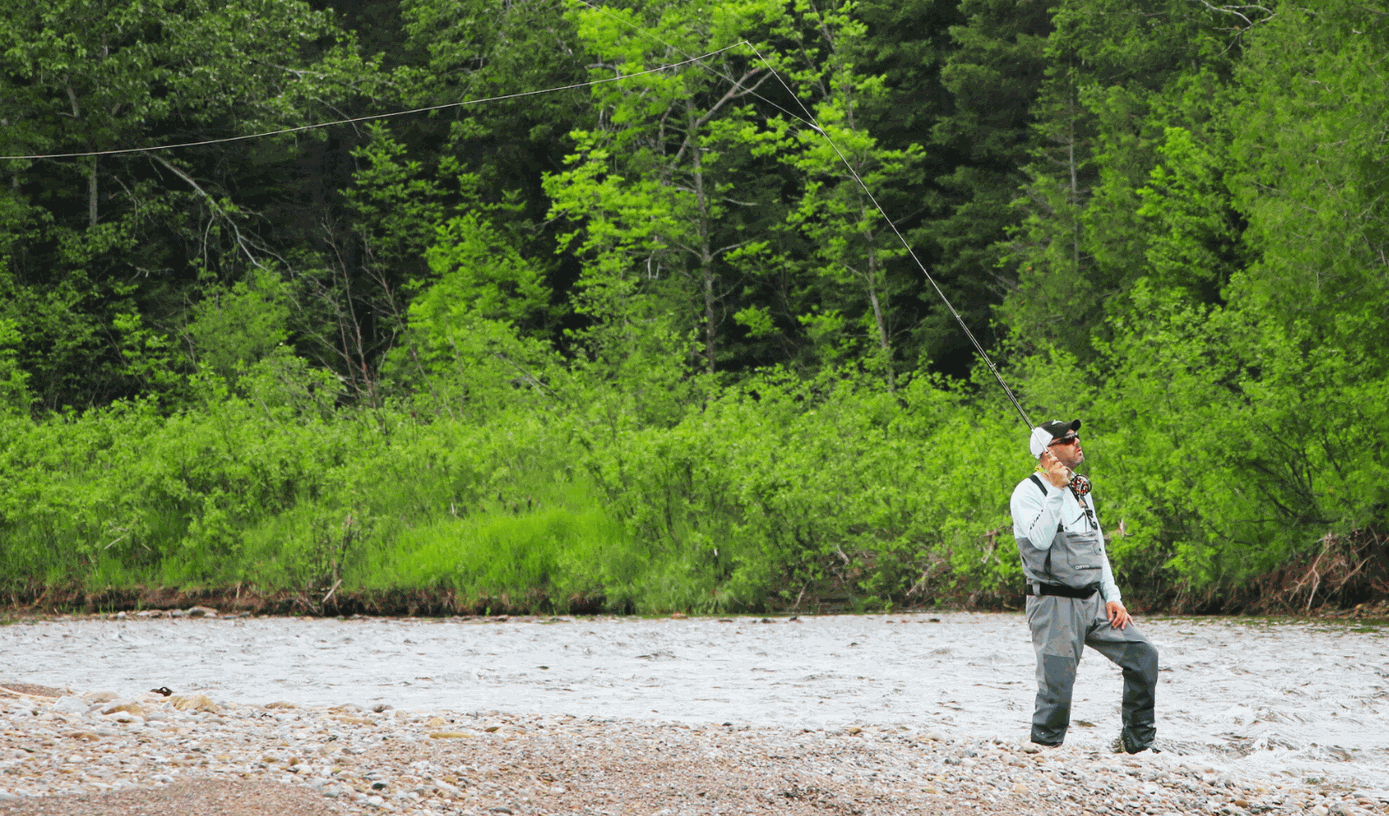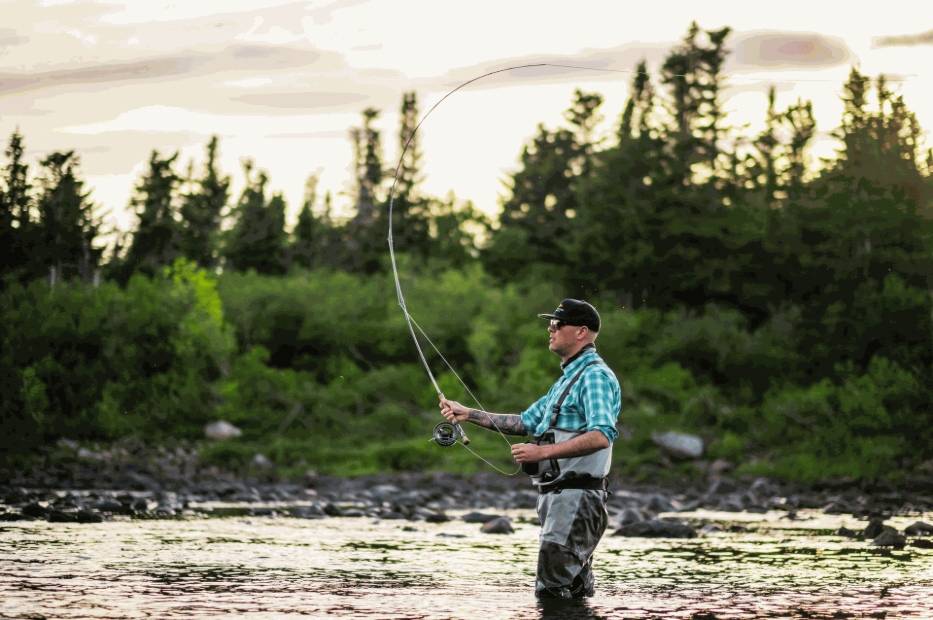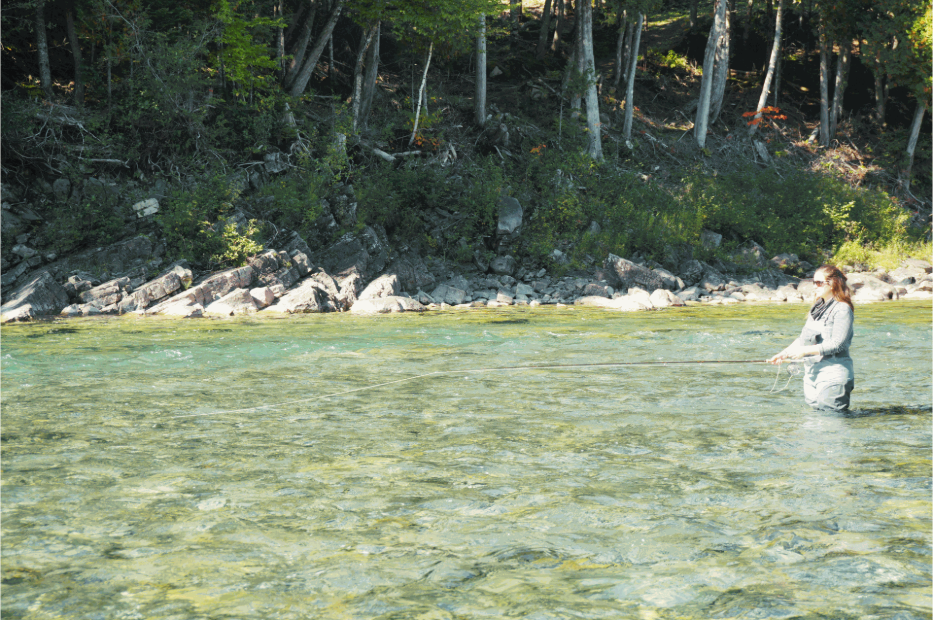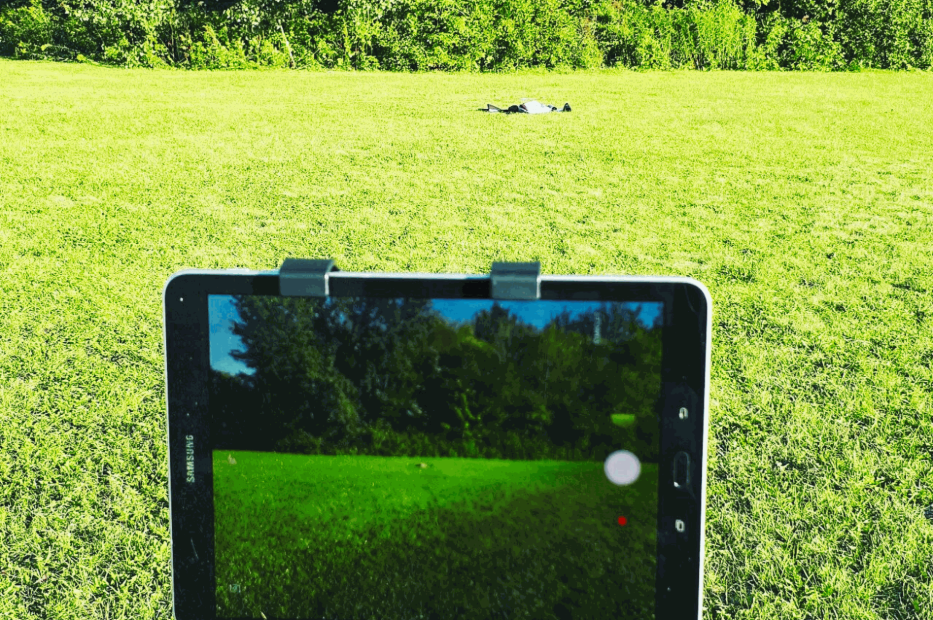By Raphaël Magnan
Fly casting involves numerous nuances that, once mastered, allow the angler to create a true spectacle. Many fishers have witnessed someone, on a lake or river, for whom everything seemed so effortless: the line, in a fluid motion, travels backward and forward on a perfectly horizontal plane. The resulting loops are those every angler aspires to replicate. And to top it all off, the fly is dropped with remarkable precision and delicacy onto the water's surface. The caster, like a conductor, appeared to act effortlessly, with an almost nonchalant ease.
Let me reassure you: when you observe a fisher in complete control of their technique, it often conceals countless hours of practice. Regardless of the time spent perfecting their cast, that apparent ease also comes from a deep understanding of the mechanics of casting. After teaching fly fishing for over 15 years, I am convinced that certain mistakes frequently recur. Fortunately, these mistakes are generally easy to fix once identified by a competent instructor. In this article, I’ll share the most common problems I’ve encountered with fly fishers and solutions to overcome them.
Excessive Wrist Flexion on the backcast
Understanding the Problem:
"Don’t break your wrist" is advice often heard by fly fishers. This advice proves relevant when excessive wrist flexion occurs during the backstop, causing the rod to become nearly horizontal during the pause. This posture, often unintentional, influences the path of the rod tip, which then follows a circular motion instead of a linear plane. This flaw can cause the fly to touch the ground or result in a loss of tension in the line, disrupting the sequence of the cast. Since it’s difficult for an angler to observe what’s happening behind them during a cast, this mistake often goes unnoticed.
Solution:
The thumb of the hand holding the rod plays a crucial role. Positioned on top of the grip, it acts as a guide. During the backward casting motion, it’s important to visualize the rod as an extension of this thumb. Upon stopping, the thumb should point toward the sky or treetops behind you. If this position is maintained, the rod will be properly aligned, and the unwanted wrist flexion will be avoided. This simple advice proves very effective and helps you better understand what’s happening behind you, even without glancing back.

Lack of Acceleration
Understanding the Problem:
Creating acceleration during the casting motion is important. This gradual increase in speed, initiated by the caster, allows the rod to flex progressively under the weight of the line until the stop. It’s during the backstop or forward stop that the rod aims to straighten. This sudden recovery transmits the necessary energy to the line, allowing it to unfurl completely. The absence of acceleration will prevent the rod from bending and, consequently, won’t provide enough energy for the line to fully extend. This concept can be difficult for novice casters to grasp. Here are some solutions to address this issue.
Solution:
In my experience, simply telling the caster to accelerate rarely produces convincing results. I prefer advising the person to start the motion as slowly as possible and finish quickly. I often emphasize the term "slowly" because, in most cases, the starts are too fast, making the gradual speed progression difficult to achieve. Another helpful tip comes from the late Mel Krieger, a reference in casting instruction. He recommended saying out loud the word "whuuuUUMP!" while increasing intonation at the end of the word, simultaneously executing the motion. This synchronization promotes a more natural and progressive acceleration. For those who prefer French, using the words "aaaallez HOP" could produce a similar effect!

Pausing Too Long or Too Briefly
Understanding the Problem:
Fly casting typically involves two essential pauses: one during the backward cast and another during the forward cast. These pauses allow the line to fully extend before moving forward with the next motion. However, a common problem is either pausing too briefly or too long.
- If the pause is too short, there’s a significant disconnect between the rod tip and the line, leading to an inevitable loss of tension.
- Conversely, a pause that’s too long lets gravity take over, potentially causing the line to undesirably touch the ground.
Mastery of rhythm is therefore essential to execute a smooth and effective cast. In this regard, the caster becomes the conductor, harmonizing each movement to find the right tempo and achieve optimal casting.
Solution:
The length of the pause is directly tied to the length of the line outside the rod. The longer this length, the more time is needed for the line to unfurl.
- Observe the line’s deployment during the forward cast. The time it takes to unfurl forward should match the time it takes backward.
- Begin the next motion only when the line is completely straight or about to be.
Specialist literature often advises waiting for the line to form a candy cane shape. This visual cue is very useful for determining the perfect moment to start the next motion. With experience and careful observation, the rhythm becomes more intuitive, thus improving cast quality. In fishing, observation is a key skill, and it’s equally essential for perfecting the art of fly casting.
Incorrect Rod Position Before Casting
Understanding the Problem:
The rod's position before initiating the cast is crucial. A common mistake is holding the rod too high, which distances the tip from the water. This flaw is often observed among fishers using light casting techniques, where this position might feel natural. However, in practice, this poor posture causes a lack of tension, making acceleration less effective. At short distances, the impact might be limited, but for longer casts, every centimeter of acceleration must be optimized. Additionally, a loss of tension between the rod tip and the fly complicates detecting bites, which can negatively affect fishing results—an important aspect not to overlook.
Solution:
From experience, becoming aware of this mistake is already part of the solution since there’s no particularly complex technical concept to master to fix it. The most challenging part is properly assimilating the starting position, understanding the impact of this flaw, and maintaining the correction cast after cast. A helpful tip is to pause between casts to reflect on the rod's positioning. Taking advantage of the moment when the fly is on the water to adjust the rod position can be both wise and beneficial. Also, be mindful of the rod's positioning at every stage of the cast. Remember, the closer the rod tip is to the water, the more efficient your cast and fishing will be.

Skipping Steps
Understanding the Problem:
Learning to fly cast is an adventure that takes time, and skipping steps always ends up causing a problem, believe me! Although it’s the last mistake mentioned in this article, it’s probably the most common among experienced casters. I’m convinced that you need to learn to walk before you can run, and this saying applies perfectly to mastering casting.
Solutions:
Take the time to practice and return to basics if certain elements of your cast lack precision. Few golfers begin their season without hitting a few balls, just as hockey players don’t neglect their shot before a game. So why not dedicate time to perfecting your casting technique?
- Choose a green space, like a park, rather than a body of water, to eliminate distractions and fully focus on your practice. Conduct short sessions, 15 to 20 minutes, and avoid repeating a motion for more than five minutes straight to prevent injuries.
- Reserve a few moments at the end of each session to practice long-distance casting; this can be a great motivator, allowing you to see technical progress.
Reading can also help you improve; there are several excellent books that explain the basics of casting and can accelerate your learning. Additionally, taking a class with a skilled instructor can be an ideal solution for quick results. However, remember that regular practice is essential to integrate the concepts learned. It’s not uncommon for my students to tell me that these practice moments have become indispensable in their fishing season, as they make outings much more enjoyable and effective.

In conclusion, I hope this technical article has clarified certain points for you. Consider using a cellphone or tablet to film yourself, which will help you identify your mistakes more easily. Who knows, you might even spot these same errors in a friend or acquaintance’s casting at the water's edge! If that person seems open to receiving advice, don’t hesitate to share one of the tips mentioned in this article.

